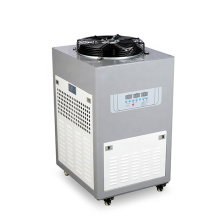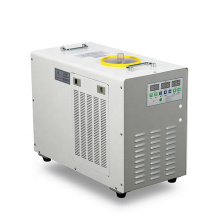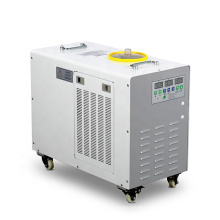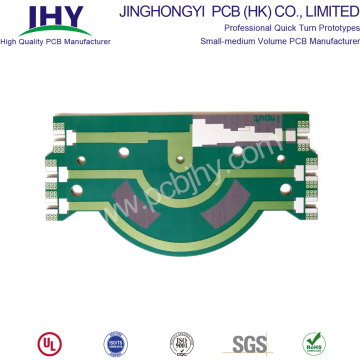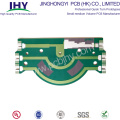PCB Antenna - Printed Circuit Board Antennas Fabrication
Product Description
Antenna is an important component for all kinds of smart devices, and it is necessary for all devices that need to use wireless. Now is the wireless era, network routers are wireless WIFI, computers, mobile phones no longer need to connect to the network wires, as well as Bluetooth headset, Bluetooth mouse, Bluetooth keyboard and so on no longer have wires, the performance of this antenna is crucial.
In general, there are some factors in antenna selection. In addition to performance, the cost should be considered. Therefore, when choosing antenna, comprehensive consideration should be taken.
What is an antenna?
Antenna is a kind of converter, which transforms the guided wave propagating on the transmission line into electromagnetic wave propagating in unbounded media (usually free space), or performs the opposite transformation.
The antenna is a component used in radio equipment to transmit or receive electromagnetic waves.
Radio communication, radio, television, radar, navigation, electronic countermeasures, remote sensing, radio astronomy and other engineering systems, which use electromagnetic waves to transmit information, rely on antennas to work.
In addition, in the use of electromagnetic waves to transmit energy, Non-signal energy radiation also requires antennas.
Generally, antennas are reversible, that is, the same antenna can be used as both transmitting antenna and receiving antenna.
The same antenna is the same as the basic characteristic parameter of transmitting or receiving. This is the reciprocity theorem of antenna.
What is Radio Wave?
Radio wave is a form of energy transmission. In the process of transmission, electric field and magnetic field are perpendicular to each other in space, and at the same time, they are both perpendicular to the direction of propagation.

Classification of Antennas
1. The antenna can be divided into transmitting antenna and receiving antenna according to its working nature.
2. It can be divided into communication antenna, broadcast antenna, television antenna, radar antenna and so on.
3. Directional antenna can be divided into omnidirectional antenna and directional antenna.
4. According to the working wavelength, it can be divided into ultra-long wave antenna, long wave antenna, medium wave antenna, short wave antenna, ultra-short wave antenna, microwave antenna and so on.
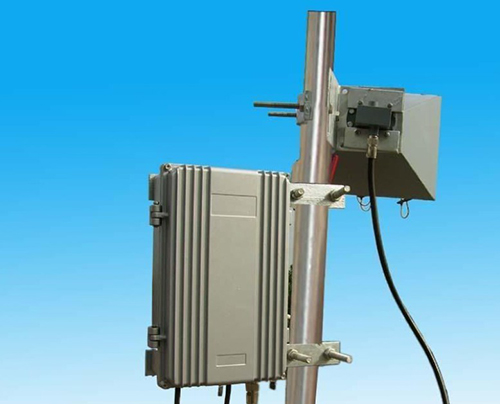
5. According to the structure and working principle, it can be divided into wire antenna and plane antenna. The characteristic parameters of the antenna are pattern, directivity coefficient, gain, input impedance, radiation efficiency, polarization and bandwidth.
6. According to the Dimensions, it can be divided into two types: one-dimensional antenna and two-dimensional antenna.
One-dimensional antenna: It consists of many wires, such as straight lines used on mobile phones or smart shapes, like rabbit ears used on TV before cable appeared. Unipolar and bipolar antennas are two basic one-dimensional antennas.
Two-dimensional antenna: Various, there are flakes (a square metal), arrays (a bunch of well-organized two-dimensional patterns), trumpets, dishes.
7. Antennas can be divided into three categories according to the different occasions of use: handheld antenna, vehicle antenna and base station antenna.
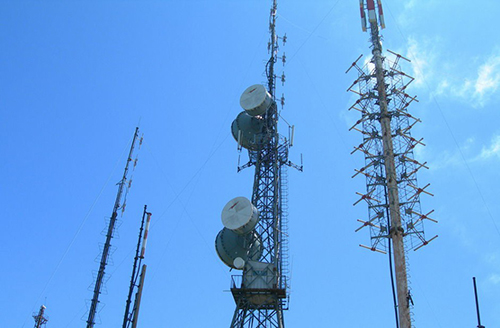
The Difference Between dBd and dBi
The gain of an antenna compared with a symmetrical oscillator is represented by "dBd", and the gain of an antenna compared with an isotropic radiator is represented by "dBi", for example: 3dBd = 5.15dBi
What is PCB Antenna?
PCB antenna refers to the part of PCB used for wireless reception and transmission.
Antennas are critical components for many wireless systems, with printed circuit board (PCB) antennas leading the pack due to their small size and ease of integration with other high-frequency circuits.
In circuit design, the antenna circuit is designed as copper wire on PCB instead of antenna.
PCB antenna is the most low-cost, medium-sized antenna, as long as properly designed can obtain sufficient performance of the antenna.
The performance and consistency of a PCB antenna depends heavily on the quality of its foundation circuit laminate, with size very much a function of the target frequency and wavelength of the antenna.
Antenna is a transducer.
When transmitting, it converts the high frequency current of the transmitter into space electromagnetic wave; when receiving, it converts the electromagnetic wave intercepted from space into high frequency current and sends it to the receiver.
Antenna design is an important part of the design of a low-power, short-range wireless transceiver used in radio frequency identification system.
A good antenna system can make the communication distance reach the best state. There are many kinds of antennas. Different applications require different antennas.
In the low power and short distance RFID system, a reliable and inexpensive antenna system is needed. PCB ring antenna is one of the most commonly used antennas. See the figure specifically:
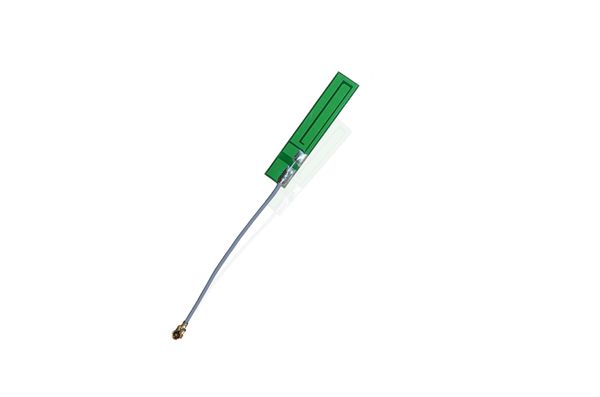
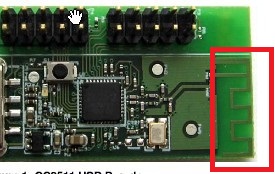
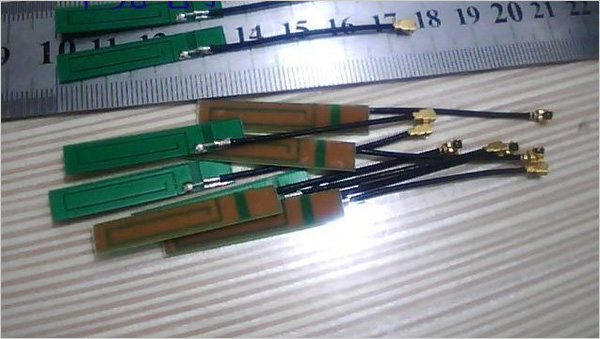
Advantages: There is almost no cost and no need to debug again after one adjustment.
Disadvantage: Only suitable for single band, such as Bluetooth, Wifi. The performance of PCB antennas in different batches will have some deviation.
At present, the most popular printed circuit board antennas are the loop, patch, inverted-F, and meander line.
Types of Antenna PCB
PCB patch Antenna

However, you can use some simple solutions to add wireless communications to the next PCB.
If you're looking to add GPS, WiFi, or other communication capabilities to your next electronic device, you might consider adding a patch antenna to your PCB. These inexpensive components are readily available and are easy to incorporate into your PCB. If you're really feeling creative, you can add a microstrip patch antenna to your board, giving you wireless capabilities that are directly integrated on your PCB.
PCB Trace Antennas
High-frequency PCB Antennas
High-frequency PCB antennas can be as simple as a microstrip patch fabricated on one side of a circuit laminate with a slightly larger ground plane underneath it, on the other side of a dielectric layer. The low profile of such antennas makes them attractive for mounting within systems that have any available flat surface.
RF/microwave PCB Antennas
RF/microwave PCB antennas can be fabricated with many different transmission-line technologies, such as stripline and coplanar-waveguide transmission lines. They may even combine several different transmission lines within the same PCB antenna design.
Low-profile Flexible PCB Antenna
Low-profile flexible PCB antenna with short length of cable and IPEX connector and adhesive tape to facilitate stick-on mounting on flat surfaces. The RoHS-compliant antenna is designed for use with "Penta-band" frequencies, which include AMPS from 824 to 896 MHz, GSM from 880 to 960 MHz, DCS from 1710 to 1880 MHz, PCS from 1850 to 1990 MHz, and UMTS from 1710 to 2170 MHz. The compact 50-Ω antenna measures 41 × 24 mm with linear polarization and an omnidirectional radiation pattern.
Low-profile PCB Antenna
low-profile PCB antenna assembly can support a wide range of frequencies covering a total range of 824 through 2170 MHz.
A growing trend in the design of PCB antennas is multiple-frequency-band coverage to accommodate systems with wideband frequency ranges and/or multiple applications.
Miniature Flexible PCB Antenna
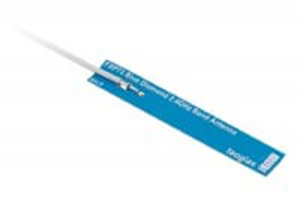
These are also PCB antenna assemblies, with 100-mm cables and standard IPEX connector for ease of connection to an application. The miniature antenna assemblies, which offer high efficiency of better than 50%, are designed for internal mounting in Wi-Fi products.
These antenna PCBs are ideal for expanding your wireless network and improving your broadcasting or receiving stations.
PCB Antennas 2.4 GHz Antenna Circuit Board
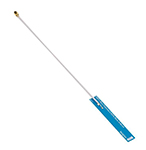 |  | 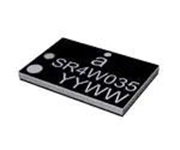 |  |
| Antennas 2.4GHz Flex PCB 1.13 MMCX(M)RA | Antennas 2.4GHz Flex PCB 1.13 U.FL | Antennas 2.4GHz FR4 lamainate antenna | Antennas 2.4GHz SMT WLAN WIFI Bluth Zigb |
Radio frequency antenna above GHZ (antenna for short) needs high frequency substrate with accurate size, so copper solder resistance film is seldom used. In addition to precise size and low requirement of aluminum foil itself, there are gold plating, silver plating and HASL, so tin is not required otherwise.
The antenna PCB also includes: GSM 3G antenna PCB, four-band antenna PCB, multi-band antenna PCB, WIFI antenna PCB, automobile antenna PCB, GPS antenna PCB, GSM antenna PCB, radar antenn PCB, FM/AM antenna PCB.
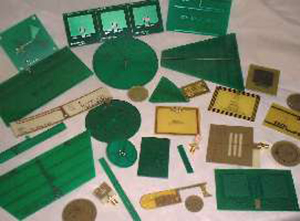
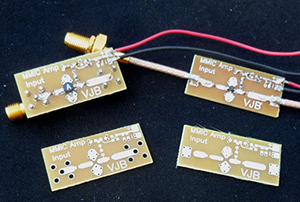
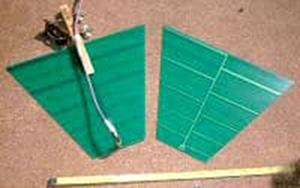
Custom Antenna PCB
Generic MMIC Antenna PCB
Log Periodic Antenna PCB
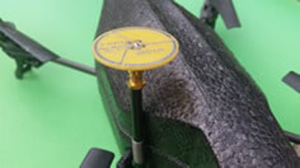
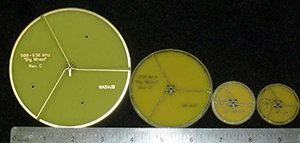
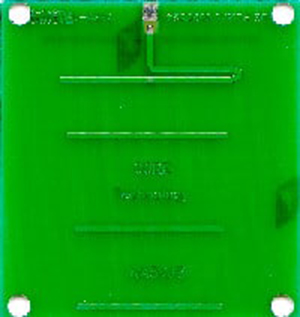
Quadcopter Antennas PCB
Wheels Antenna PCB
Yagi Antenna PCB
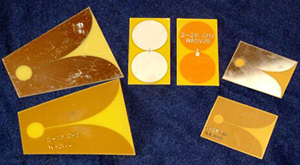


Ultra Wide Band (UWB) Antenna PCB
PCB with a chip antenna (the blue part)
Printed Circuit Board Antennas
Antenna PCB Material
Antenna PCB material should be high frequency , Normally fr4 canot have good performance . here we list material that can be used for antennas PCB manufacturing :
- Rogers PCB
- Teflon
- Arlon
- Taconic
- Nelco
- Fr5
- Dupont
- Isola
Designing a PCB Antenna
Antenna PCB design and RF layout are the two most essential components of any wireless device. You can take two identical RF products, each with a different PCB antenna design and layout and get two vastly different RF performance ranges. What`s the difference between them ? It`s all about quality and consideration taken during the design process.
Many electronic applications into the 2.4 GHz and 915 MHz bands for commercial and consumer use, the demand for compact PCB antennas operating in the ISM bands is ever-increasing. As the name suggests, a PCB antenna is printed directly on the board
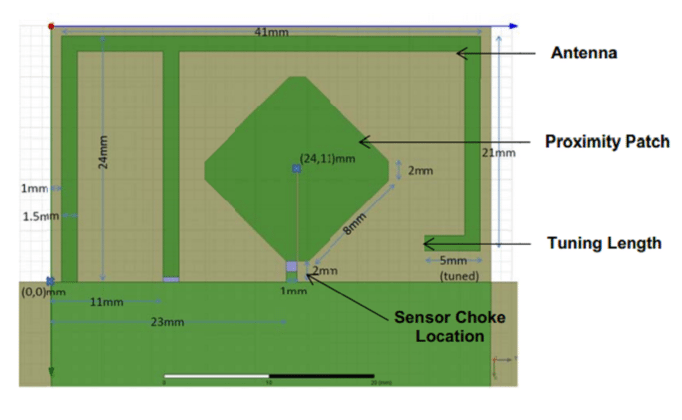
1. You can use the free online Web page to calculate the Width of the Micro-strip Line we need to designed. you can go to url to check .
2. Use the following formula below to calculate the width of the antenna.

A Formula for Calculating the Width of Antennas
A Formula for Calculating the Width of Antennas
3. For Antenna Design
A Meandered Inverted F-Antenna, or MIFA, needs to be length-adjusted to account for antenna radiation impedance and frequency. The tip and length of a MIFA antenna are determined by the thickness of your PCB as shown below:
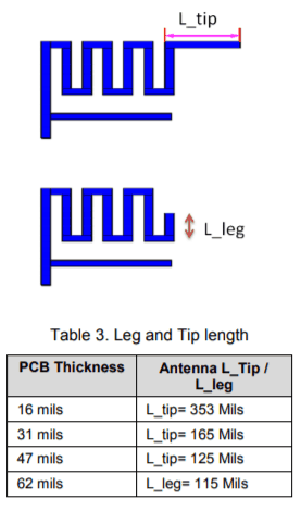
Antenna PCB design and RF layout are the two most essential components of any wireless device. You can take two identical RF products, each with a different PCB antenna design and layout and get two vastly different RF performance ranges. What`s the difference between them ? It`s all about quality and consideration taken during the design process.
Many electronic applications into the 2.4 GHz and 915 MHz bands for commercial and consumer use, the demand for compact PCB antennas operating in the ISM bands is ever-increasing. As the name suggests, a PCB antenna is printed directly on the board
PCB Antenna Manufacturing services
1. Choose high-quality high-frequency material resources to make your products win fundamentally
- Maintaining long-term strategic partnership with Rogers, Taconic, Arlon, Nelco, Isola who is the world's leading supplier of high-frequency materials.
- We can provide high-quality materials and related resources for customers in the communications industry, and fundamentally control the quality of products.
2. Owned a complete set of communication circuit board production equipment to reduce the risk of outsourcing production for you
- It is specially equipped with Plasma plasma degumming machine and ultra-long plate parallel exposure machine for communication industry. The exposure length can reach 2M.
- Special for the communications industry to introduce the industry's rare surface treatment production line: silver plating, tin plating, Immersion silver, Immersion tin
3. Excellent workmanship to meet the needs of communication PCB board making
- Mature mixing technology: FR4 + PTFE, FR4 + 408HR, FR4 + ROGERS, ceramic + FR4
- 3 mil/3 mil line width and line spacing, impedance tolerance can be controlled at +8%.
4. First-class PCB industry technical team, effectively optimize the stability of high-frequency board
- Over 12 years experience in PCB technology team, with rich experience in high-frequency materials to ensure product stability
5. Strict quality control system to effectively guarantee product performance
- Control strictly in accordance with international quality system standards
- Strict implementation of quality PDCA cycle process to continuously improve product performance
6. Environmental Pioneer, Commitment to Society, JHYPCB and you to create a green home
- JHYPCB regards environmental protection as its responsibility. We will protect our living environment and create a green home together with you.
Difference between Ceramic Antenna and PCB Antenna and IPEX Antenna
Ceramic antenna is a miniaturized antenna suitable for Bluetooth devices.
Ceramic antenna is divided into block ceramic antenna and multi-layer ceramic antenna.
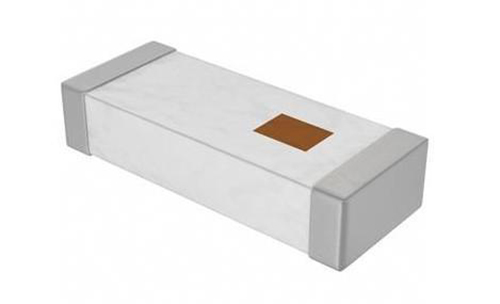
Block antenna is to use high temperature to sinter the whole ceramic body once and then print the metal part of the antenna on the surface of the ceramic block.
The multi-layer antenna is sintered at high temperature after laminating and aligning the multi-layer ceramics by low temperature co-firing. So the metal conductor of the antenna can be printed on each layer of ceramics dielectric layer according to the design requirements, which can effectively reduce the size of the antenna and achieve the purpose of concealing the antenna.
Because the dielectric constant of ceramic is higher than that of PCB circuit board, the size of antenna can be reduced effectively by using ceramic antenna.
PCB antenna refers to the part of PCB used for wireless reception and transmission.
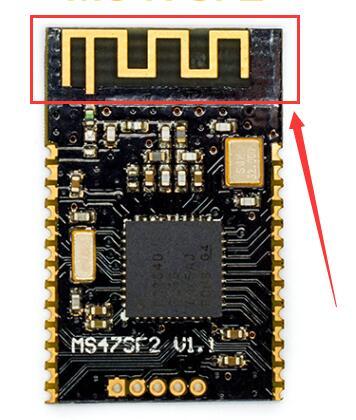
When transmitting, it converts the high frequency current of transmitter into space electromagnetic wave; when receiving, it converts the electromagnetic wave obtained from space into high frequency current input receiver.
Its advantages are: less space occupation, low cost, no need to assemble antenna alone, not easy to touch damage, easy assembly of the whole unit, but at a cost - Performance sacrifice.
The disadvantage is: single antenna field is difficult to achieve roundness, high insertion loss, relatively low efficiency, easy to be disturbed by the motherboard.
IPEX antenna is a kind of interface between RF circuit and antenna, which is widely used in the veneer of WLAN related products.
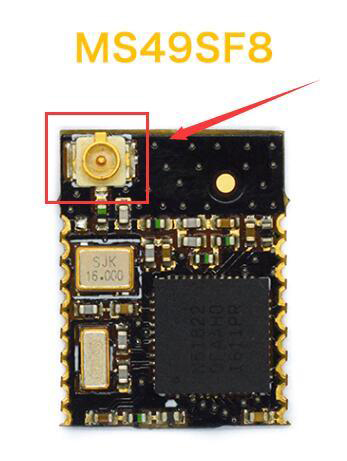
Its advantages are: better field control, low insertion loss, good directional direction of signal, high efficiency, strong anti-interference ability, can reduce interference by the motherboard, and do not need too much debugging matching, as a terminal manufacturer, only need to connect an IPEX antenna outside.
Of course, there are drawbacks: higher costs, assembly is more troublesome.
Contact us if you need more details on Antenna PCB. We are ready to answer your questions on packaging, logistics, certification or any other aspects about Antenna PCB Design、PCB Antenna WIFI. If these products fail to match your need, please contact us and we would like to provide relevant information.
Product Categories : PCB Application



